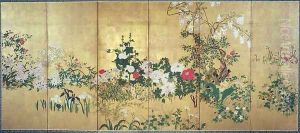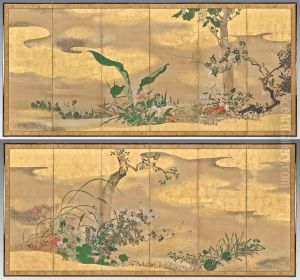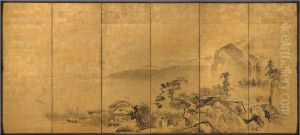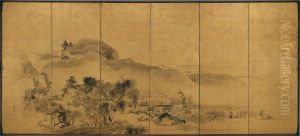Watanabe Shiko Paintings
Watanabe Shiko was a Japanese painter and printmaker who lived during the Edo period. Born in 1683 in Aichi Prefecture, he was initially trained in the Kanō school of painting, which was the dominant style of painting at the time and was patronized by the shogunate and powerful daimyōs (feudal lords). The Kanō school emphasized the use of bold brush strokes and a strong Chinese influence, which was typical of Japanese painting of the era.
Shiko later developed his own style, which incorporated elements of the Rinpa school and the Nanga (Southern Painting) school, also known as Bunjinga. The Rinpa school was known for its decorative qualities, use of bright colors, and nature themes, while Bunjinga was characterized by more literati-style painting, often featuring landscapes and employing techniques and subjects inspired by Chinese scholarly painting.
During his lifetime, Shiko became known for his landscape paintings, bird-and-flower paintings, and for his work in book illustration. His style is noted for its delicate lines, attention to detail, and subtle use of color. Shiko's contribution to the art of the Edo period also included his role as a teacher. He instructed several students who would go on to become artists in their own right, thus influencing subsequent generations.
Watanabe Shiko's work is a reflection of the rich cultural exchange between Japan and China during the Edo period and demonstrates the interplay between different artistic schools and traditions of the time. His paintings can be found in various museums and collections in Japan and around the world. He passed away in 1755, leaving behind a legacy of blending traditional Japanese aesthetics with Chinese artistic principles.



